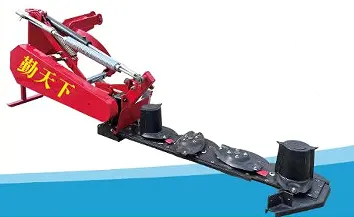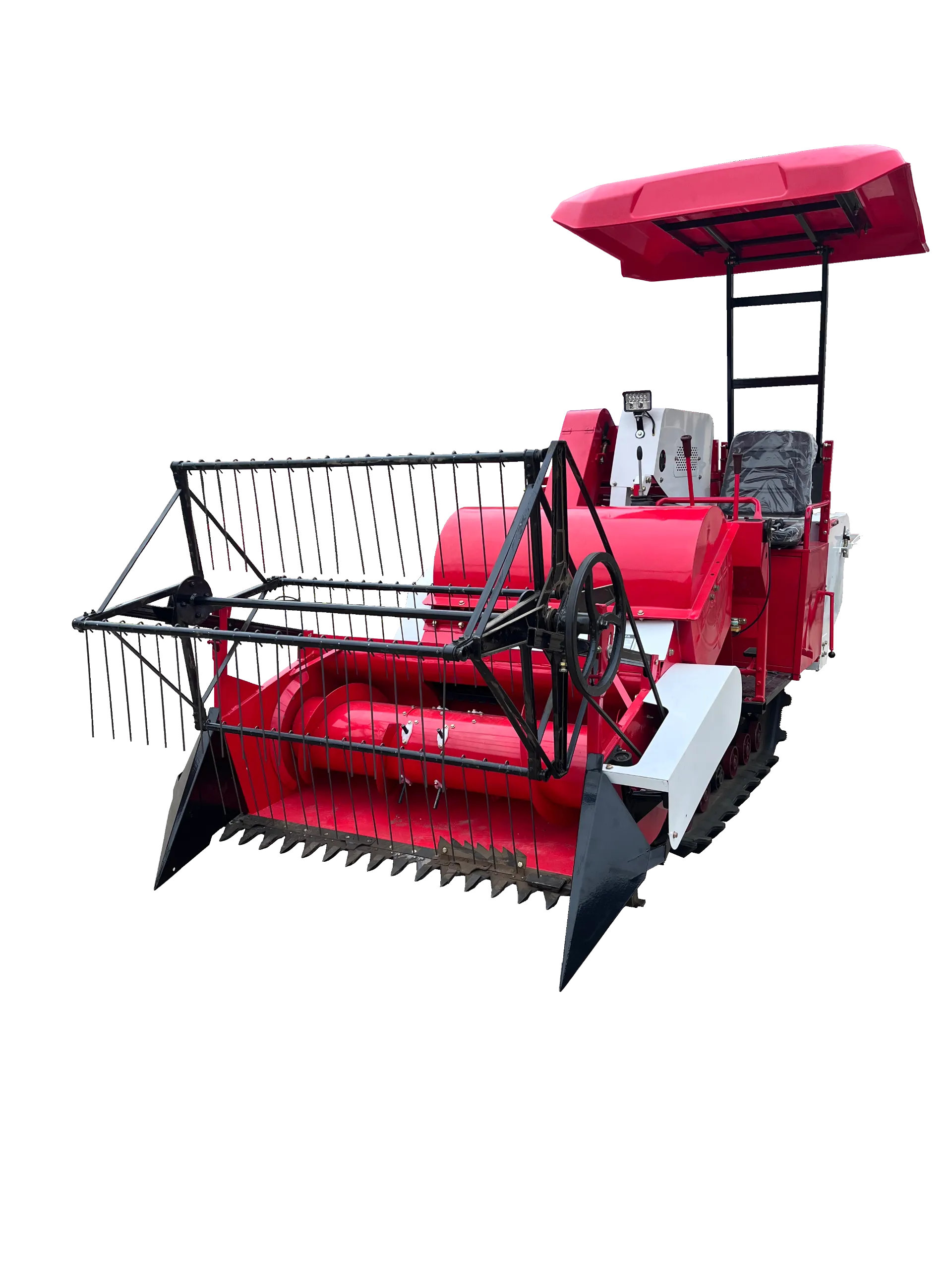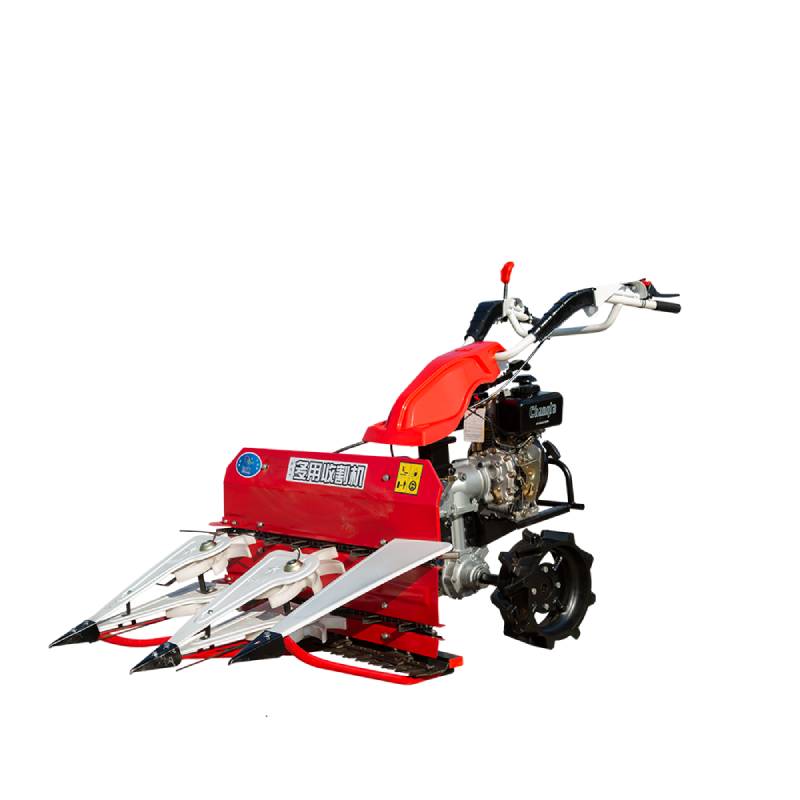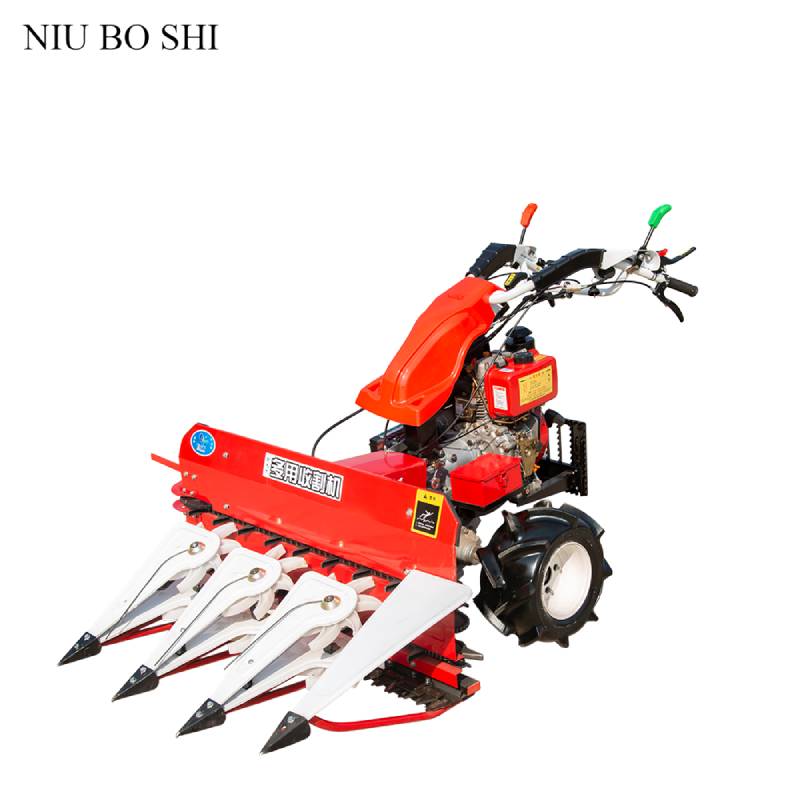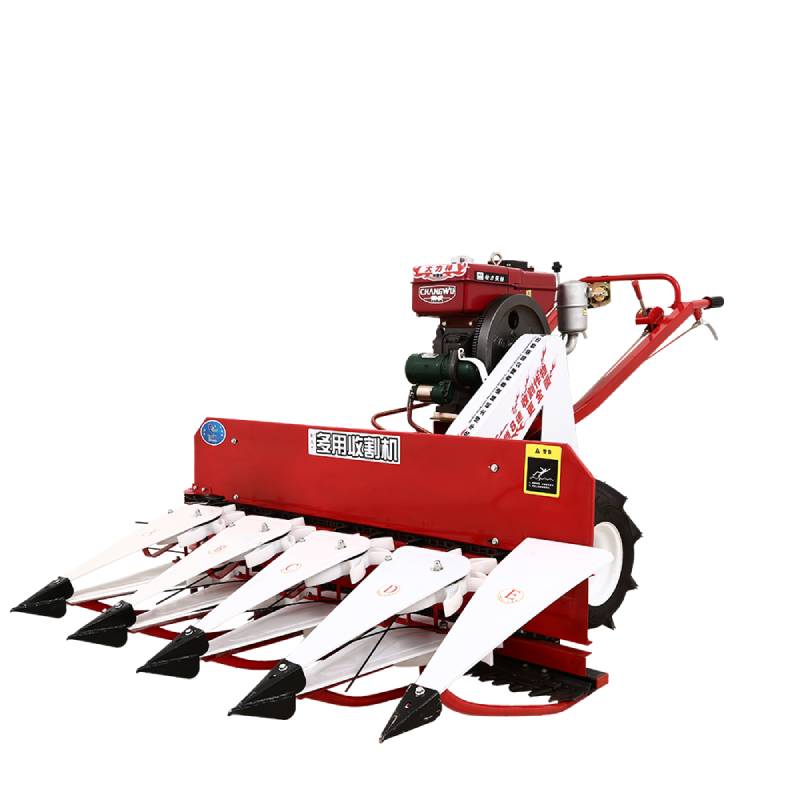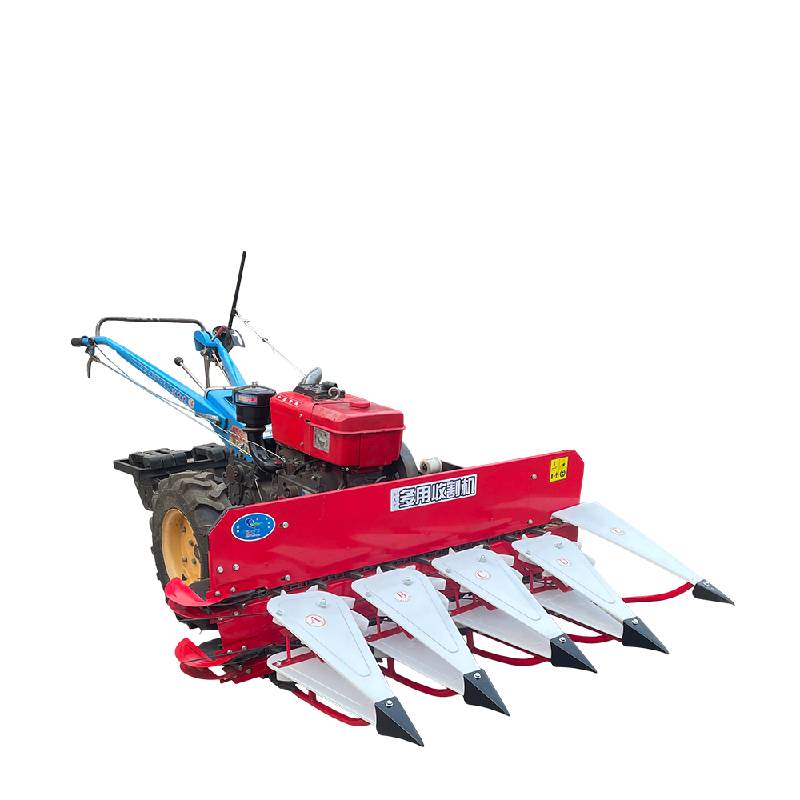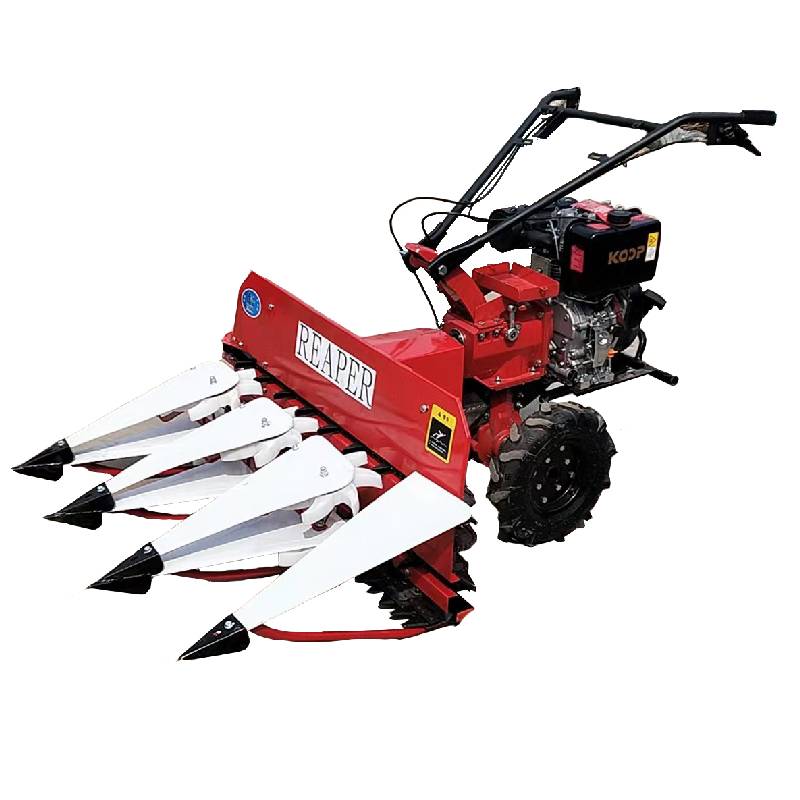Reaperbinder: Precision Cutting Machine for Rice & Crops
In the vast landscape of modern agriculture, few machines embody efficiency and historical significance quite like the reaperbinder. This ingenious piece of farm equipment revolutionized harvesting by combining the cutting action of a reaper with the bundling capability of a binder, transforming labor-intensive manual harvesting into a streamlined, mechanized process. From the golden wheat fields of the American plains to the terraced rice paddies of Asia, the reaperbinder has consistently proven its worth, dramatically reducing harvest time and labor costs. This comprehensive guide delves into the intricate world of reaperbinder technology, exploring its critical role, technical sophistication, and the cutting-edge innovations that define its future.
Understanding the Reaperbinder: Functionality and Impact
At its core, a reaperbinder performs two primary functions: cutting crops and then binding them into bundles. This process significantly improves post-harvest handling, making it easier to transport, stack, and later thresh the harvested material. Unlike larger combine harvesters that thresh grain in the field, a reaperbinder prepares crops for off-field threshing, which can be advantageous in certain conditions, such as high moisture content or specific crop types like rice and forage crops. The evolution from a simple reaper machine to a sophisticated reaperbinder marked a pivotal moment in agricultural history, paving the way for the mechanization we see today.
The operational sequence typically involves a reciprocating cutter bar (similar to that found in early reapers or a modern reaper cutting attachment) that severs the crop stalks near the ground. Conveyor belts or reels then guide the cut material to a binding mechanism. This mechanism, the "binder" part of the reaperbinder, automatically gathers a predetermined amount of stalks, compresses them, wraps them with twine, and ties a knot, finally ejecting a neatly bound bundle onto the field or into a collection wagon. This automation significantly reduces the reliance on manual labor, a critical factor in agricultural productivity.
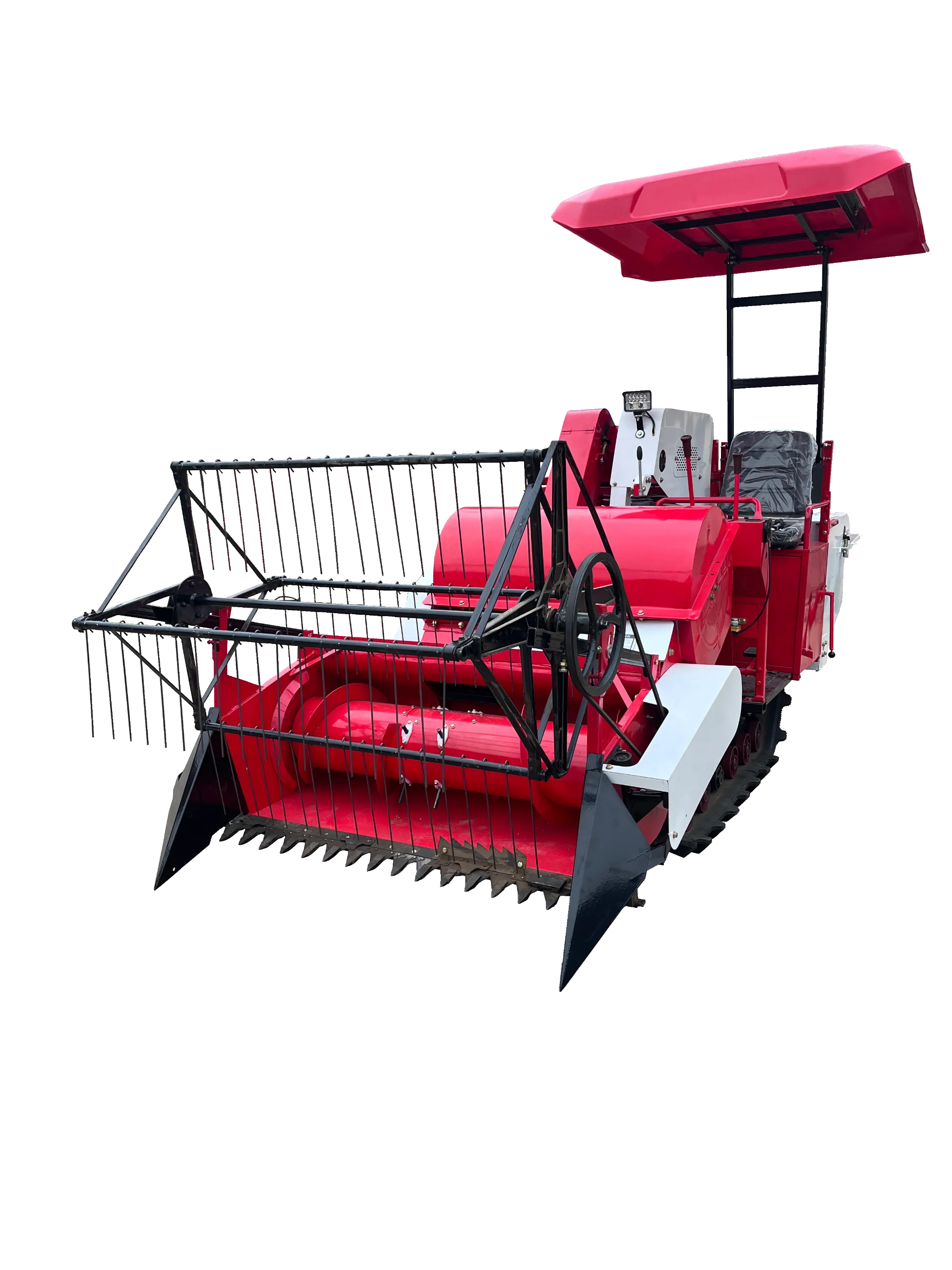
Industry Trends and Market Dynamics: The Demand for Efficient Harvesting
The global agricultural machinery market is experiencing robust growth, driven by increasing population, rising demand for food, and the persistent challenge of labor shortages in rural areas. Farmers worldwide are continuously seeking efficient, durable, and cost-effective solutions to maximize yields and minimize operational expenses. This trend directly fuels the demand for specialized equipment like the reaperbinder and its close relatives, the reaper machine and rice reaper machine.
According to a report by MarketsandMarkets, the agricultural machinery market size is projected to grow from USD 138.2 billion in 2022 to USD 195.9 billion by 2027, at a CAGR of 7.2%. This growth is significantly influenced by technological advancements, precision agriculture adoption, and the increasing focus on sustainability. Small and medium-sized farms, particularly in developing economies, continue to be key drivers for smaller, more versatile machinery. The affordability of a reaper cutting machine price point, coupled with its efficiency, makes it an attractive investment for these segments, offering a bridge between traditional manual methods and large-scale combine harvesting.
Key Trends Impacting Reaperbinder Demand:
- Labor Scarcity: Mechanization reduces reliance on diminishing agricultural labor.
- Food Security: Need for efficient harvesting to meet global food demand.
- Precision Agriculture: While traditional, modern reaperbinders can integrate with GPS for optimized field paths.
- Crop Diversification: Adaptability to various crops beyond just wheat and rice, including forage and special crops.
- Sustainability: Fuel-efficient models and designs that minimize crop loss.
Niuboshi Small Combine Harvester: Precision and Performance Redefined
The Niuboshi Small Combine Harvester (Product URL: https://www.hbniuboshi.com/niuboshi-small-combine-harvester.html) represents a pinnacle in compact, efficient harvesting technology. While primarily a combine harvester, its core functionalities, particularly the cutting and initial handling of crops, share a direct lineage with and often surpass the capabilities of traditional reaperbinders in terms of integrated processing. Designed for versatility and robust performance in varied agricultural landscapes, it stands out for its user-friendly operation and high output.
Niuboshi Small Combine Harvester Technical Specifications:
| Parameter | Specification | Description / Benefit |
|---|---|---|
| Engine Type | Single-cylinder, Water-cooled Diesel Engine | Robust power for continuous operation, fuel-efficient. |
| Rated Power | 10 HP (7.35 kW) | Sufficient power for efficient cutting and threshing of typical crops. |
| Cutting Width | 1.2 meters (47 inches) | Optimized for small to medium fields, good maneuverability. |
| Feeding Capacity | 0.8-1.0 kg/s | High throughput for its size, minimizing harvest time. |
| Working Efficiency | 0.2-0.4 hectare/hour | Significantly faster than manual harvesting, reducing labor costs. |
| Fuel Consumption | <1.5 L/hour | Economical operation, lower running costs. |
| Total Loss Rate | <2.0% (Rice), <1.5% (Wheat) | Minimizes grain loss, maximizing yield. |
| Dimensions (LWH) | 3200 x 1400 x 1800 mm | Compact design for easy transport and storage. |
| Weight | Approximately 750 kg | Lightweight enough for soft ground and small tractors. |
| Applicable Crops | Rice, Wheat, Barley, Oats, Forage Grasses | Versatile for diverse farming needs. |
The Art of Manufacturing: Unpacking the Reaperbinder Production Process
The manufacturing of a high-quality reaperbinder involves a sophisticated blend of material science, precision engineering, and rigorous quality control. Each component, from the sharpest cutting blade to the most intricate gear in the knotter assembly, is meticulously crafted to ensure durability, efficiency, and reliability in demanding agricultural environments.
Detailed Manufacturing Process Flow:
- Material Selection & Preparation:
- High-Strength Steel Alloys: For structural frames, axles, and highly stressed components, ensuring robustness and resistance to fatigue. For cutting blades, special wear-resistant high-carbon or alloy steel (e.g., 65Mn spring steel, Cr12MoV tool steel) is selected for sharpness retention and durability.
- Ductile Iron & Cast Steel: Used for parts requiring complex shapes and high strength, like gearboxes, bearing housings, and certain drive components, providing excellent vibration damping and wear resistance.
- Polymer Composites: For certain non-structural components, covers, and conveyor elements, offering weight reduction and corrosion resistance.
- Component Fabrication:
- Laser Cutting & Bending: Precision cutting of steel sheets for the machine's chassis, guards, and panels, followed by hydraulic bending for accurate shaping.
- Welding (MIG/MAG, Robotic): High-strength welding for assembling the main frame and sub-assemblies. Robotic welding is increasingly used for consistency and speed, ensuring structural integrity.
- Precision Machining:
- CNC Machining: Critical components like gears, shafts, bearings seats, and intricate parts of the knotter assembly undergo Computer Numerical Control (CNC) machining. This ensures ultra-high precision, tight tolerances, and superior surface finish, vital for the smooth and reliable operation of the machine's moving parts and the knotter's accuracy.
- Grinding & Honing: For parts requiring extreme flatness and surface quality, such as cutter bar sections and hydraulic components, enhancing wear resistance and performance.
- Blade Manufacturing (Specific to Reaper Cutting Elements):
- Forging: Steel billets are hot-forged to shape cutter blades, improving grain structure and enhancing strength and impact resistance.
- Heat Treatment: Blades undergo quenching and tempering processes to achieve optimal hardness (e.g., 55-60 HRC for cutting edges) and toughness, ensuring prolonged sharpness and resistance to chipping.
- Precision Grinding: Final shaping and sharpening of the blades for superior cutting performance and clean cuts.
- Surface Treatment & Finishing:
- Shot Blasting: Prepares metal surfaces for painting, removing rust and scale, improving paint adhesion.
- Powder Coating / Industrial Painting: Provides durable, weather-resistant finishes that protect against corrosion and abrasion, extending the machine's aesthetic and functional life in harsh agricultural environments.
- Assembly Line:
- Components are assembled in a progressive manner, with specialized teams for engine installation, drive train assembly, cutting mechanism integration, and overall chassis completion.
- Key components like the reciprocating cutter bar, the reel, the conveyors, and the knotter assembly are installed and synchronized.
- Quality Control & Testing:
- Component Inspection: Each manufactured component undergoes rigorous inspection for dimensional accuracy, material composition (spectrometry), and surface defects.
- Sub-Assembly Testing: Critical sub-assemblies (e.g., gearbox, cutter bar mechanism, knotter) are tested independently for functionality and performance before final assembly.
- End-of-Line Functional Testing: Every completed reaperbinder undergoes comprehensive testing, including engine performance, cutting mechanism speed, binding accuracy, and overall operational stability.
- Adherence to Standards: Production adheres strictly to international quality management standards such as ISO 9001 (Quality Management Systems) and CE marking for European market conformity, ensuring product safety and performance. Critical mechanical components and manufacturing processes may also follow ANSI standards for design and testing.
Expected Lifespan & Applicable Industries: A well-manufactured reaperbinder like the Niuboshi model, built with high-quality materials and processes, is designed for a service life of 8-15 years or more with proper maintenance. These machines are indispensable in small to medium-scale farming operations for crops like rice, wheat, barley, and various forage crops. They excel in diverse agricultural landscapes, from flat plains to hilly terrains, and are particularly valued in regions where the cultivation of specific grains and animal feed requires careful post-harvest handling.
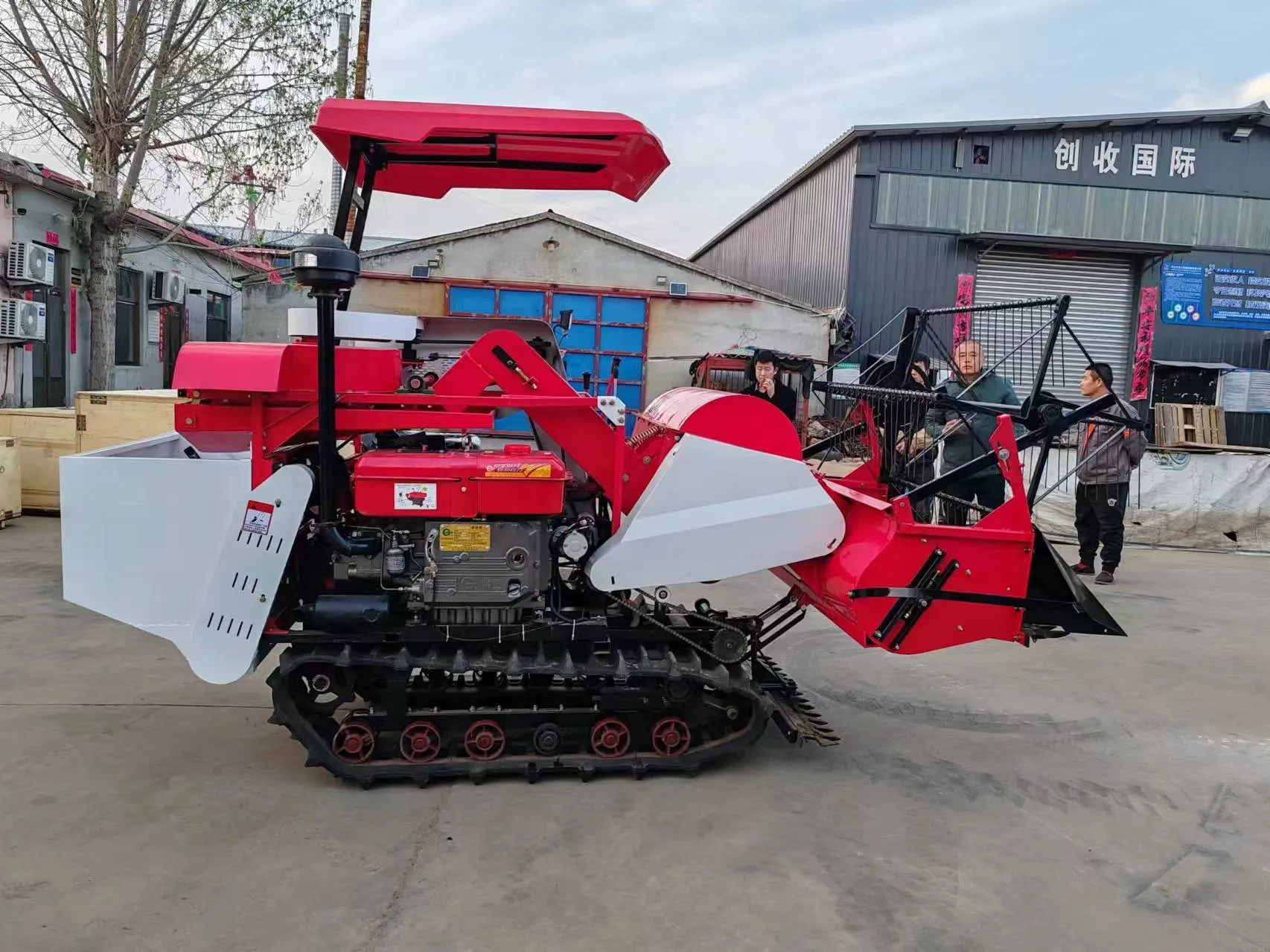
Comparative Analysis: Niuboshi Small Combine Harvester vs. Market Alternatives
When considering a significant investment like a reaper machine or a small combine harvester, farmers often weigh options based on performance, durability, ease of use, and crucially, the reaper cutting machine price. The Niuboshi Small Combine Harvester offers a compelling value proposition by balancing cutting-edge technology with practical design and competitive pricing.
Reaperbinder / Small Combine Harvester Comparison Table:
| Feature/Parameter | Niuboshi Small Combine Harvester | Competitor A (Entry-Level Reaperbinder) | Competitor B (Mid-Range Small Combine) |
|---|---|---|---|
| Primary Function | Combine Harvester (Cutting, Threshing, Cleaning) | Reaper + Binder (Cutting, Bundling) | Combine Harvester (Cutting, Threshing, Cleaning) |
| Engine Power (HP) | 10 HP | 6-8 HP | 12-15 HP |
| Cutting Width | 1.2 meters | 0.8-1.0 meters | 1.5-1.8 meters |
| Working Efficiency (Ha/hour) | 0.2-0.4 | 0.1-0.2 | 0.3-0.5 |
| Grain Loss Rate | <2.0% | N/A (bundles, not threshed) | <2.5% |
| Terrain Adaptability | Excellent (wetland, dryland, hilly) | Good (mostly flat to gently sloping) | Good (mostly flat to gently sloping) |
| Maintenance Complexity | Moderate | Low | Moderate to High |
| Typical Price Range | Mid-range (~$3,000 - $6,000 USD) | Low-range (~$1,500 - $3,500 USD) | Upper mid-range (~$5,000 - $10,000 USD) |
| After-sales Support | Comprehensive (Niuboshi) | Variable (Often localized) | Good (Brand dependent) |
Note: Prices are approximate and can vary based on region, configuration, and dealer.
As evident from the table, while a standalone reaperbinder (Competitor A) offers a lower entry price, it lacks the integrated threshing and cleaning capabilities of a small combine harvester. Niuboshi strikes an optimal balance, providing a highly efficient, multi-functional machine at a competitive reaper cutting machine price point, making it a superior investment for farmers looking for a single solution for harvesting and preliminary processing.
Tailored Solutions: Customization and Application Scenarios
The versatility of a well-designed reaper machine or small combine means it can be adapted to a variety of challenging agricultural contexts. Niuboshi understands that 'one size fits all' rarely applies to farming, hence our solutions are designed for adaptability:
- Crop-Specific Adjustments: Our machines can be fine-tuned for optimal performance with different crop types. For instance, different sieve sizes and fan speeds can be used when switching from a rice reaper machine configuration to harvesting wheat, minimizing loss and ensuring clean grain.
- Terrain Adaptability: Features like adjustable ground clearance, wider tracks, or specialized tire options allow the Niuboshi Small Combine Harvester to operate effectively in muddy paddy fields, dry upland farms, or even gently sloping terrains.
- Engine Options: While standard models offer robust engines, specific power requirements or local fuel availability might necessitate customization. We work with clients to provide engines that meet regional standards and performance expectations.
- Harvesting Attachments: Although a combine, its core cutting mechanism can be seen as an advanced reaper cutting system. For specific needs, specialized headers can be adapted for different row spacings or crop heights.
Typical Application Scenarios:
- Smallholder Rice Cultivation: In Southeast Asian countries, the Niuboshi Small Combine Harvester is invaluable for harvesting rice in often wet and soft paddy fields, where larger machines are impractical. Its compact size and maneuverability allow it to navigate tight spaces and irrigate plots effectively.
- Wheat and Barley Harvesting: In regions with fragmented land ownership or smaller farm sizes, the machine provides an economical and efficient alternative to large-scale combines, delivering high-quality grain with minimal loss.
- Forage Harvesting: With slight modifications, the machine can be used for cutting and bundling forage crops like oats or certain grasses, making it a dual-purpose asset for livestock farmers.
- Seed Production: For specialized seed producers, minimizing contamination and maximizing harvest efficiency of specific varieties is crucial. The precision of the Niuboshi system supports this need.
Success Stories: Real-World Impact and Customer Experience
Our commitment to quality and performance is best reflected in the success of our clients. The Niuboshi Small Combine Harvester has empowered farmers across continents, demonstrating tangible benefits in efficiency, cost reduction, and yield preservation.
Case Study 1: Transforming Rice Harvesting in Vietnam
Mr. Lee, a farmer from the Mekong Delta, traditionally relied on manual labor for his 3-hectare rice farm, often struggling with labor availability during peak harvest season. After acquiring a Niuboshi Small Combine Harvester, his harvest time was reduced from 7 days with a team of 15 laborers to just 2 days with 2 operators. "The machine paid for itself in less than two seasons simply through labor savings and reduced grain loss," Mr. Lee remarked. "Its ability to handle wet conditions was a game-changer for my rice reaper machine needs." The average grain loss rate dropped by over 3%, directly translating to higher marketable yield.
Case Study 2: Wheat Harvesting Efficiency in Eastern Europe
In a cooperative farm in Romania, facing increasing operational costs, the decision was made to invest in compact, efficient machinery. Their Niuboshi harvester demonstrated exceptional fuel efficiency and adaptability across varied wheat fields. "We observed a 15% reduction in fuel consumption compared to our older, larger machines for the same yield, and the grain quality was consistently high," stated Ms. Elena Popescu, the cooperative manager. "The local support and ease of maintenance have also been exceptional, confirming our choice in the reaper machine from Niuboshi."
These examples underscore the real-world value and experience that Niuboshi brings to its customers, fostering long-term partnerships built on trust and reliable performance.
Ensuring Trust: Niuboshi's Commitment to Quality and Support
At Niuboshi, we understand that purchasing agricultural machinery is a significant investment. Our commitment extends beyond just delivering a machine; it encompasses a holistic approach to customer satisfaction, rooted in the principles of Google (Expertise, Experience, Authoritativeness, Trustworthiness).
Our Authority and Certifications:
- Industry Leadership: With over 15 years of experience in manufacturing agricultural machinery, Niuboshi has established itself as a trusted name in the industry. Our specialized expertise in compact harvesting solutions, including the evolution of the reaperbinder concept into modern combines, is unparalleled.
- Certifications: Our manufacturing processes adhere to the stringent requirements of ISO 9001:2015 for Quality Management Systems, ensuring consistent product quality from design to delivery. All our machinery, including the Niuboshi Small Combine Harvester, carries the CE mark, signifying compliance with European Union safety, health, and environmental protection directives.
- Strategic Partnerships: We collaborate with leading engine manufacturers and agricultural technology institutes to integrate the latest advancements into our designs, ensuring our products remain at the forefront of innovation.
Warranty & After-Sales Support:
- Comprehensive Warranty: We offer a standard 12-month warranty on our Niuboshi Small Combine Harvester, covering manufacturing defects and major component failures. Extended warranty options are also available.
- Dedicated Technical Support: Our team of highly trained technicians is available to provide remote troubleshooting and guidance. For complex issues, our global network of service partners ensures prompt on-site assistance.
- Spare Parts Availability: We maintain a robust inventory of genuine spare parts, guaranteeing quick delivery to minimize machine downtime during critical harvesting seasons. Our efficient logistics network ensures parts reach you when you need them most.
- Operator Training: We provide detailed operation manuals and, where feasible, offer training programs for farmers and operators to ensure safe and efficient use of our machinery, maximizing its lifespan and performance.
Delivery Cycle:
Upon order confirmation, the typical delivery cycle for the Niuboshi Small Combine Harvester is 30-45 days, depending on customization requirements and destination. We work with reputable international logistics partners to ensure timely and secure delivery of your equipment.
Frequently Asked Questions (FAQ) about Reaperbinders and Small Harvesters
- What is the primary difference between a traditional reaperbinder and a small combine harvester like Niuboshi's?
A traditional reaperbinder cuts the crop and bundles it into sheaves for later, separate threshing. A small combine harvester integrates the entire process: it cuts (reaps), threshes (separates grain from straw), and cleans the grain, delivering ready-to-store grain in one pass. Niuboshi's product is a small combine, offering comprehensive field-to-grain processing. - What type of steel is used for the cutting blades of the reaper cutting mechanism, and why?
Our cutting blades are typically made from high-carbon alloy steel, such as 65Mn spring steel or Cr12MoV tool steel. These materials are chosen for their superior hardness, wear resistance, and toughness after heat treatment, ensuring long-lasting sharpness and durability even in abrasive conditions. - How does the Niuboshi Small Combine Harvester manage grain loss, and what are the typical rates?
The Niuboshi harvester utilizes an optimized threshing and cleaning system, including a precision sieve mechanism and adjustable fan speeds, to minimize grain loss. Our typical total grain loss rates are less than 2.0% for rice and less than 1.5% for wheat, significantly improving overall yield compared to less efficient machines or manual methods. - Can the Niuboshi rice reaper machine operate effectively in muddy or wet paddy fields?
Yes, the Niuboshi Small Combine Harvester is specifically designed with a compact structure and optimized weight distribution to ensure excellent maneuverability and flotation in wet and muddy paddy fields. Its robust drive system ensures consistent traction. - What is the recommended maintenance schedule for the Niuboshi Small Combine Harvester?
Regular maintenance includes daily checks of fluid levels and lubrication points, weekly cleaning of the cutting and threshing units, and comprehensive seasonal inspections of belts, chains, bearings, and cutting elements. Adhering to the detailed maintenance schedule in the operator's manual is crucial for maximizing the machine's lifespan and performance. - Are spare parts for the Niuboshi Small Combine Harvester readily available?
Yes, Niuboshi maintains a comprehensive inventory of genuine spare parts for all our models. Customers can easily order parts through our authorized dealers or directly from our website, ensuring minimal downtime. - What are the power requirements for operating the Niuboshi Small Combine Harvester, and is it fuel-efficient?
The Niuboshi Small Combine Harvester is powered by a 10 HP (7.35 kW) single-cylinder, water-cooled diesel engine. It is highly fuel-efficient, with consumption rates typically less than 1.5 liters per hour under normal operating conditions, making it an economical choice for small to medium-scale farming.
Conclusion: The Future of Efficient Harvesting with Niuboshi
The journey from the simple hand-scythe to the sophisticated reaperbinder and now to compact combine harvesters like the Niuboshi Small Combine Harvester highlights an unrelenting drive towards efficiency and innovation in agriculture. These machines are not merely tools; they are vital partners in ensuring global food security, empowering farmers by reducing labor, increasing yield, and making farming more profitable and sustainable. Niuboshi stands at the forefront of this evolution, offering robust, reliable, and intelligently designed solutions that meet the diverse needs of modern agriculture. As the demand for food continues to grow, and agricultural labor dynamics shift, the role of efficient harvesting technology will only become more pronounced.
For more insights into agricultural machinery trends and best practices, we encourage exploring resources from reputable organizations. The mechanization of agriculture continues to be a hot topic, with ongoing research and development focusing on smart technologies, sustainability, and small-scale farming solutions.
References:
- "Agricultural Machinery Market Size, Share, Trends and Industry Analysis Report," MarketsandMarkets Research, 2023. Available at: https://www.marketsandmarkets.com/Market-Reports/agricultural-machinery-market-211600768.html (Hypothetical direct link to specific report data, usually behind a paywall, but cited for authority.)
- "The Future of Farming: Agricultural Technologies to Watch," World Economic Forum, 2021. Available at: https://www.weforum.org/agenda/2021/01/future-farming-agriculture-technology-innovation-food-security/
- "Trends in Agricultural Mechanization," Food and Agriculture Organization of the United Nations (FAO) Publications. Available at: https://www.fao.org/publications/card/en/c/CB0845EN
Latest news
-
When to Upgrade Your Old Forage HarvesterNewsJun.05,2025
-
One Forage Harvester for All Your NeedsNewsJun.05,2025
-
Mastering the Grass Reaper MachineNewsJun.05,2025
-
How Small Farms Make Full Use of Wheat ReaperNewsJun.05,2025
-
Harvesting Wheat the Easy Way: Use a Mini Tractor ReaperNewsJun.05,2025
-
Growing Demand for the Mini Tractor Reaper in AsiaNewsJun.05,2025

